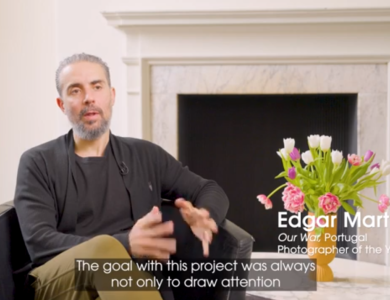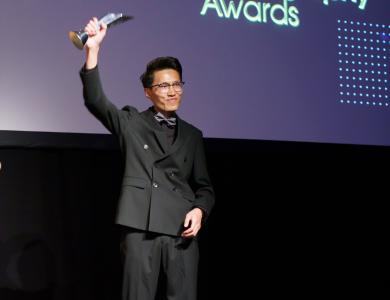
Sony World Photography Awards 2023
Edgar Martins was announced as the Photographer of the Year in this year's Sony World Photography Awards. His moving series Our War uses memory and invention to give us a powerful, personal set of portraits that are not only a tribute to his late friend Anton Hammerl but highlight the nuanced reality of war. We speak to the photographer about his series and winning the distinguished title.
Congratulations Edgar on being awarded the prestigious Photographer of the Year. Regarded as key career moment, you now join Vanessa Winship, Alys Tomlinson, Craig Easton and other respected photographers in the history of the Sony World Photography Awards. How does it feel to have won this top prize?
I’m still trying to process everything. It’s obviously a huge honor, especially given the number of entries to the award (more than 415,000 images are entered, I believe). However, it’s also a particularly emotive experience for me because I get to share my friend’s story on the world stage and bring attention to the family's fight to find his remains.
You have been successful in the Sony World Photography Awards before: in 2018 you were awarded 1st Place in the Still Life category (Professional competition), for your series Siloquies And Soliloquies On Death, Life And Other Interludes and also 2nd Place in the Architecture category (Professional competition), for the series The Poetic Impossibility of Managing the Machine. What is it about this particular photography competition that makes you want to enter again and again?
Its reach. It probably has the biggest audience of all photography competitions.
What is the goal of your series Our War, and how do you think the Sony World Photography Awards can help to facilitate this goal?
Now that the project is practically finished, it was important to bring it to the consciousness of the wider public in order to ensure it will be widely and adequately disseminated. When a project is finalised it usually takes months, sometimes years, to bring the project into the consciousness of galleries and museums. I am hopeful this will shorten this process and therefore enable me to focus on my main priority which is the work itself (although, admittedly, with all the press the project has generated, this has been a tad tricky during this past week…).
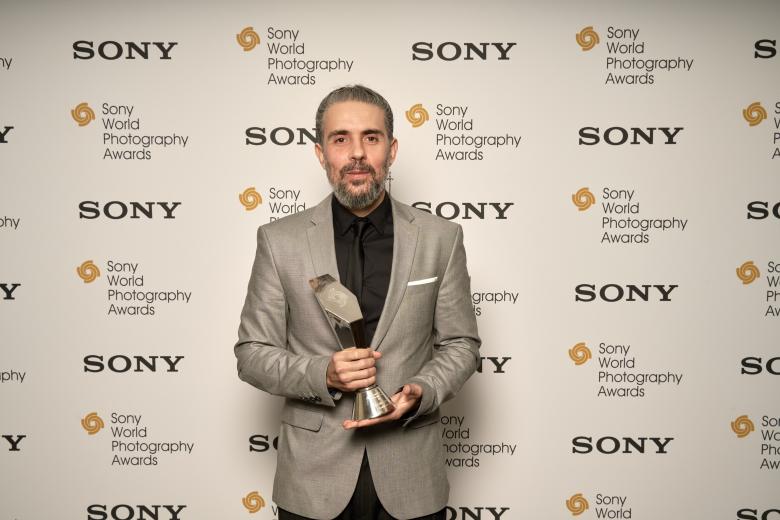
Sony World Photography Awards 2023
Our War is a collection of portraits of people involved in the Libyan Civil War. Why did you steer away from creating the photographs in one distinct style?
This project is not only a collection of portraits of people directly or indirectly connected to the Libyan conflict, but also others enacting their stories. There are two aspects to this work, which collide, overlap and blur: there's the reality of the situation, on the ground, and also how I imagined this reality to be in the 10 years prior to travelling to Libya and since I was informed of Anton’s death.
From the outset, I set out to produce a project rooted not only in Anton’s story (the places he visited and travelled through and the people we met along the way), but also in the very simple premise: how does one tell a story when there is no witness, no testimony, no evidence, no subject?
In the absence of all of these things (evidence, testimony, witness, subject), an imagined reality of the conflict, people, and the circumstances of Anton’s demise, was all I had to make sense of the situation for nearly a decade. I wanted these two dimensions to merge in my work.
Secondly, this approach was also motivated by a very specific concern I have always had about photography and documentary photography, photojournalism in particular: its proclivity to inadvertently misrepresent or outright exploit its subjects. When the power dynamics between photographer and subject are not kept in check, this often leads to photographers producing images that, in my view, only serve to confirm the already held opinions within the dominant ideology about the particular subject they are working on. So in the case of war, how often do we see these tropes: the rebel as the good guy, the freedom fighter as the ideologue, the militias as the bad guys, and war reduced to a simple polarity between aggressors and victims? Reality is always much more nuanced than this. Most people involved in the conflict aren’t ideological. For some it’s a paycheck, for others, it’s a means of survival.
So in order to distance the viewer from the way in which they're used to consuming these types of stereotypes, I photographed people who were not only affected or involved in the conflict but also people enacting their stories. They ranged from descendants of people that fought in the conflict but hadn't experienced the horrors of war directly, and wanted to understand the trauma of their parents or locals. We needed their support for access or information and we’d invite them to participate in photoshoots so we could share our stories with them and learn about theirs. I also selected many of my subjects based on how they reminded me of Anton at different stages of our friendship. Many of these sessions were cathartic and reconciliatory. And this made me realise that photographs don’t have to be the end goal but a means to an end. A means to bring people together and share their stories.
By employing this approach the viewer is never really sure who it is that he/she is looking at (though there are clues here and there). And this not only disrupts the voyeurism usually inherent in the consumption of this kind of imagery but also protects the identity of those I was collaborating with. There is a certain indignity in speaking for others. I’m much more interested in creating conditions in which people that may not have a voice or have found a voice can speak for themselves.
Lastly, as to the issue of aesthetics, I wanted the project to be fairly fragmented and idiosyncratic in its approach. I did not want it to be defined, contextualised, or pinned down by a specific genre or set of aesthetics. Aesthetics, in photography, are a little bit like a Trojan horse. We accept it as a free gift but when we do it colonises us.
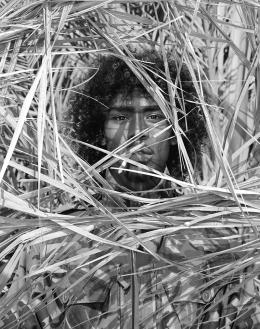
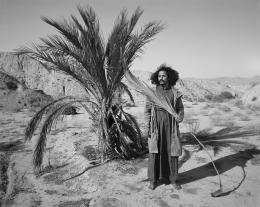
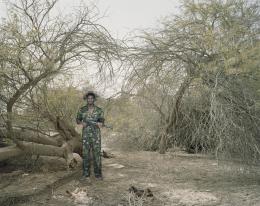
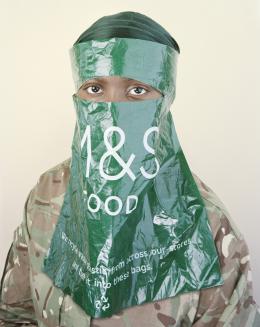
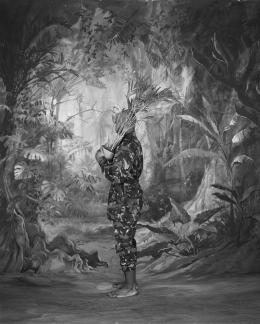
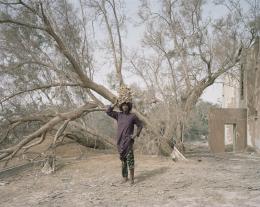
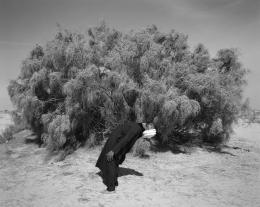
The series is a tribute to your late friend and journalist Anton Hammerl, who was shot during the Libyan Civil War. Can you share why you wanted to create this project?
Our War is a previously unseen series of images produced over a period of three years in Libya and North Africa that forms part of an overarching project symptomatically titled Anton’s hand is made of guilt. No muscle or bone. He has two clinically depressed fingers and an angry thumb. It uses as a starting point a speculative investigation into the death and disappearance of my close friend, the photojournalist Anton Hammerl, during the 2011 Libyan war.
In 2011, Anton Hammerl travel to Libya with three other foreign reporters to cover the clashes between pro and anti-government forces. On the 5th of April that year, a few days after arriving in the country, they were forcefully abducted by Gaddafi-backed militia, on the front line, around the city of Brega. When Anton’s colleagues were finally set free two months later, following a worldwide campaign for their release, we discovered that Anton had been shot dead on the day of their capture and his body left in the desert. His mortal remains are missing to this day.
Over the past ten years family and friends have lobbied the UK, Libyan and South-African governments as well as the UN rapporteur on extrajudicial, arbitrary and summary executions to launch an enquiry into his disappearance. Although a complaint has since been filed with the UN, in 2019 I decided to travel to North Africa myself.
From the moment I entered Libya, I recognised just how difficult, if not impossible, it would be to carry out any kind of thorough investigation into Anton’s whereabouts in such a fragmented and volatile place. So I set out to produce a project inspired by his plight with the goal of exploring new visual representational methods and techniques to interrogate conflict and trauma and enable innovative approaches to respond to war, photographic ethics, and dealing with bereavement and loss. By retracing Anton’s steps, the locations he visited, the place where he met his end, by engaging with people involved in the conflict and others enacting their stories, by finding meaningful intersections between both our journeys and understanding the motivations behind his, I was able to step into his shoes, even if momentarily.
Notwithstanding this, the project is about much more than honouring my dear friend. It portrays a complex story, warped by absences, that talks of the difficulty of documenting, testifying, witnessing, remembering, and imagining.

Sony World Photography Awards 2023
It’s still early days since you received this award, but has anything particularly exciting happened since the announcement?
There’s been a lot of press and the recognition has consolidated the importance of the project and its story in a variety of people’s minds that I had already been engaged with prior to the award (collectors, galleries, museums, etc).
Have you had any thoughts on what you'll use your prize money for?
Yes. It will be invested into the dissemination of the work: the book and the short film I am working on for the final exhibition of the project.
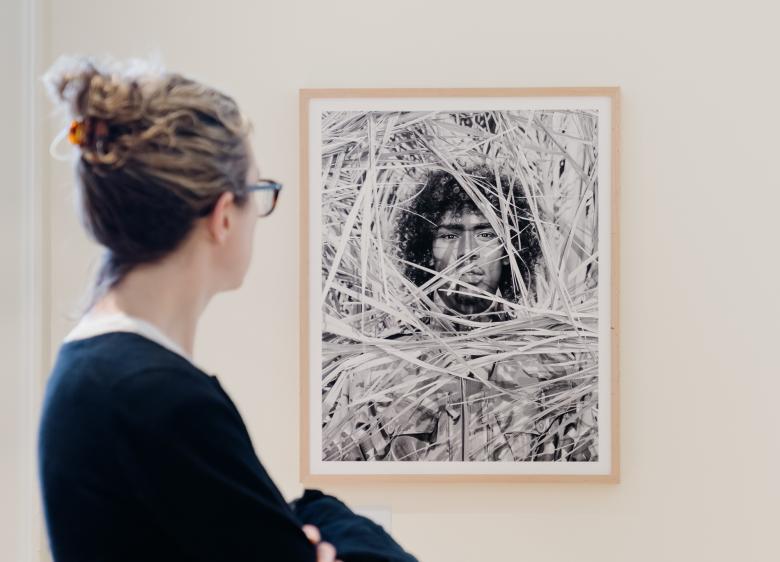
Part of the prize for winning Photographer of the Year is to have a solo show at Somerset House alongside next year's Sony World Photography Awards. Have you had any thoughts on what you'd like to show? Will it be new work or an extension of Our War?
It will definitely be this project. But I hope to be able to show it in its final format, where photographs will only be one element of it. I hope to be able to show the audio-visual installations that I have been working on too.
See Edgar Martin's winning series, alongside other inspiring imagery, at the Sony World Photography Awards 2023 exhibition, currently on show at Somerset House to 1st May.


